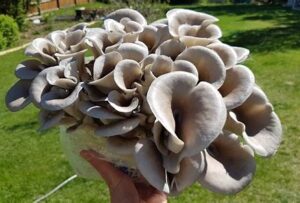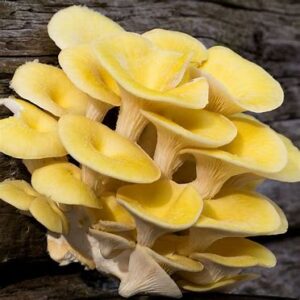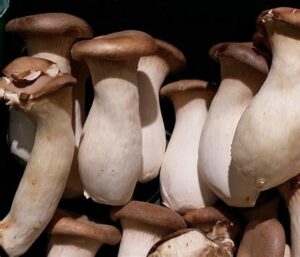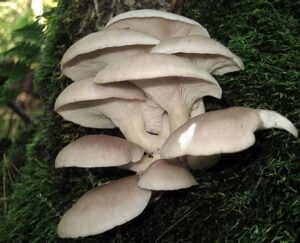The Complete Guide to Oyster Mushrooms
Mushrooms have been treasured in ancient medicine for centuries, and they continue to be popular today for their numerous health benefits. One of the most prized varieties is the oyster mushrooms, known for its distinctive taste and many health benefits.
This guide will explore everything you need to know about oyster mushrooms. You’ll learn about how they were used in traditional medicine schools and what modern science has uncovered about their positive influence on the body. We’ll also talk about how you can grow your own oyster mushrooms and much more. Let’s jump in!
click here to buy magic mushrooms in the UK
What are oyster mushroom?
Oyster mushroom (pleurotus ostreatus) are edible mushrooms long valued for their medicinal properties. Interestingly, these mushrooms are also playing a fascinating role in mycoremediation, which involves using fungi to help restore balance to the environment; mushrooms have demonstrated an ability to break down petroleum byproducts and plastic, filter waterborne pollutants and bacteria, and even remove heavy metals (1).
What do oyster mushrooms look like?
Oyster mushrooms come in different colors as there are different types of oyster mushroom. They can be white, pink, gold, blue, brown, and gray. Common oyster mushrooms are typically white and can turn light gray with age. They also have a brownish hue to them and well-defined gills (2).
Unlike other mushrooms that grow as a single mushroom, oyster mushrooms grow in clusters, with fan- or shell-shaped caps (hence being called oyster mushrooms). You might also recognize them by their scent—some people report a briny odor reminiscent of seafood, while others compare it to anise.
There are other varieties of oyster mushroom too:
- Pearl oyster mushroom
- Pink oyster mushroom
- King oyster mushroom
- Golden oyster mushroom
- Blue oyster mushroom
- Phoenix oyster mushroom
Psst: Remember that while some grocery stores may carry several varieties of oyster mushrooms, the most common type you’ll see is the common oyster mushroom.
Historical and medicinal use
For centuries, oyster mushrooms have been a part of traditional Chinese medicine (TCM), known as ping gu or hao gu in Mandarin. Since oyster mushrooms are classified as a warming food with sweet and pungent qualities, according to TCM, they help support the liver and kidneys, and improve the body’s yang energy. Additionally, traditional Chinese medicine recommends oyster mushrooms in cases of impotence, cold hands and feet, general weakness, low back issues, and low energy.
For the Westerner, this means oyster mushroom nourish your immune system and help you have more energy (3).
Health benefits of oyster mushroom
Like many mushrooms, oyster mushroom are low in carbohydrates, nutrient-dense, and brimming with antioxidants. They contain protein, polysaccharides, healthy fat, and vitamins and minerals such as folate, calcium (3), choline, potassium, iron, phosphorous, and zinc (4). It’s worth noting that while oyster mushrooms have traces of vitamin C and selenium, they’re not necessarily a good source of either.

Modern science is confirming what traditional medicine schools have known for centuries: oyster mushrooms have a positive influence on cholesterol levels, the immune system, heart health, blood sugar, and on our microbiome. Here’s a brief rundown on how oyster mushrooms work their magic in the human body:
- Improves cholesterol levels: Oyster mushroom contain a molecule strikingly similar to the cholesterol-lowering drug Lovastatin, which is why eating oyster mushrooms can lower your cholesterol. Even more, oyster mushrooms also contain beta-glucan, which supports your body’s ability to metabolize fat.
- Bolsters your immune system: This humble mushroom stimulates your immune system (which includes protecting against allergic reactions) and has anti-cancer properties; oyster mushrooms have a therapeutic effect and may minimize the spread of breast and colon cancer cells (3).
- Blood sugar regulation: Research has demonstrated that eating oyster mushrooms can reduce post-meal blood sugar levels. These changes aren’t limited to consuming fresh oyster mushrooms either; another study showed how ingesting oyster mushroom powder significantly lowered hemoglobin A1c, a marker for long-term blood sugar control.
Where do oyster mushroom grow?
Like many mushrooms, oyster mushroom are common in temperate climates. However, they have been known to grow in tropical regions as well. Because they are so hardy and adaptable, they grow in many different environments, from forests and woodlands to urban environments, and on agricultural byproducts such as straw and sawdust.
Oyster Mushroom Nutrition Facts
One cup of raw, sliced oyster mushroom (86g) provides 28 calories, 2.9g of protein, 5.2g of carbohydrates, and 0.3g of fat. Oyster mushrooms are an excellent source of niacin, fiber, and riboflavin. This nutrition information is provided by the USDA.3
- Calories: 28
- Fat: 0.3g
- Sodium: 15.5mg
- Carbohydrates: 5.2g
- Fiber: 2g
- Sugars: 0.95
- Protein: 2.9g
- Niacin: 4.27mg
Carbs
There are just 28 calories in a cup of raw, sliced oyster mushroom. Most of the calories come from carbohydrates (5.2g). The mushrooms are low in sugar, providing just under 1 gram of naturally occurring sugar. You’ll benefit from 2 grams of fiber when you eat them. The rest of the carbohydrate in oyster mushrooms is starch.
The glycemic load of a 1-cup serving is estimated to be 3, making them a low-glycemic food.
Fats
Oyster mushrooms are nearly fat-free, providing just 0.3 grams per serving.
Protein
You’ll get almost 3 grams of protein when you consume a cup of oyster mushrooms.
Vitamins and Minerals
Oyster mushroom are an excellent source of several vitamins, including niacin (providing 21% of your recommended daily intake), riboflavin (18%), and pantothenic acid (11%). You’ll also get smaller amounts of folate, vitamin B6, and thiamin.
Minerals in oyster mushrooms include phosphorus, potassium, copper (10% of your daily needs for each), iron, magnesium, zinc, manganese, and selenium.
Calories
One cup of raw, sliced oyster mushroom (86g) provides 28 calories, 59% of which come from carbs, 32% from protein, and 10% from fat.
Summary
Oyster mushrooms are a low-calorie, fat-free, fiber-rich food high in several vitamins and minerals such as phosphorus, copper, and niacin.
Growing oyster mushroom at home

Not sure you’re ready to test the waters of wildcrafting? No problem. Instead of harvesting mushrooms out in the wild, consider growing your own mushrooms at home. Even if it’s your first time, oyster mushrooms are one of the easiest mushrooms to grow for home cultivation. They’re adaptive to many different environments and grow exceedingly well on most wood byproducts like sawdust, paper, pulp sludge, cereal straws, coffee grounds, and even banana fronds (2). Grow kits make home mushroom cultivation even easier and include everything you need to get started.
Looking for another reason to consider growing your own oyster mushroom? Depending on where you live, the supermarkets in your area may not stock oyster mushrooms. By growing your own, you can skip grocery stores and farmers’ markets and instead harvest your mushrooms right in your kitchen.
There are plenty of helpful mushroom forums you can explore if you’re looking for growing tips or want to connect with other like-minded fungi fans. Whether you’re looking to troubleshoot an issue growing your mushrooms or wish to learn more about growing mediums and how to increase your home harvest, these online communities will have you covered.
How can you enjoy oyster mushroom?

Oyster mushroom are home in so many dishes that it’s well worth keeping them on hand for your culinary creations. They add delightful texture and up the nutritional value of any meal. They’re a popular ingredient in various cuisines worldwide for a good reason.
Oyster mushrooms taste like a delicate and almost nutty mushroom; you get all the earthy, umami flavor a typical mushroom has to offer, with a mildness that fits into nearly any dish. Here are some of our favorite oyster mushroom recipes to get you started.
Sauteed oyster mushroom with garlic butter
An easy recipe that’s weeknight-friendly and fancy enough for company, Family Style Food’s sauteed oyster mushrooms make it easy to have a delicious side dish on the table in just 20 minutes! Butter and olive oil combine with garlic (a match made in flavor heaven) for an elevated dish that’s easier to make than it looks. Another bonus? These crispy pan-fried oyster mushrooms can be added to a soft scramble for a delightful morning breakfast or tossed into a favorite pasta recipe for a tasty twist on an old favorite.
Oyster mushroom galette
Better suited to the weekend or a relaxing weekday afternoon, this oyster mushroom galette from DHS Kitchen Studio is a fabulous opportunity to experiment with oyster mushrooms. A mix would be lovely; shiitake, maitake, cremini, or button mushrooms would all be delightful here. Black pepper, chili flakes, mint, and green onions combine with gruyere and parmesan cheese for a beautiful depth of flavor. Skip the usual veggies and give this galette a go.
Frequently Asked Question on oyster mushrooms

Why are my oyster mushrooms rubbery?
As the water evaporates, damp mushrooms will steam. The rubbery texture is due to the steaming.
How long do oyster mushroom need to be cooked?
Two tablespoons of oil are heated in a heavy, large skillet on medium heat. Let the mushrooms cook for 3 to 5 minutes, without disturbing them, until they begin to brown. What’s this? Toss the mushrooms and cook them for 3-5 more minutes, until they have browned on all sides.
Can you eat oyster mushrooms raw?
Mushrooms should never be consumed raw. You can cook, grill or stir fry them. Uses- King Oyster Mushrooms are best used in soups and sauces that contain a lot of liquid. This allows the mushroom to retain its texture while absorbing it. You can use them in sauces, soups, or in dishes with chicken, fish, or meat.
Should we wash oyster mushrooms?
It’s not necessary to deep clean your mushrooms. Place them in a strainer and, if needed, rinse briefly with running water.
Do you have to cook oyster mushrooms before eating?
Uncooked oyster mushroom have a metallic taste. They are still delicious raw, but they don’t look as pretty. The delicate taste of oyster mushroom is enhanced by cooking, which transforms their texture from a bouncy one to something velvety.
Should fresh oyster mushroom be refrigerated?
Keep oyster mushrooms fresh in the refrigerator by storing them in a plastic bag that is loosely sealed. They should last for five to seven days.
How long to soak oyster mushrooms in salt water?
Pour 4 cups water, add 1 teaspoon of salt. Add the mushrooms after swooshing to dissolve the sodium. Let the mushrooms soak for 20 minutes. Drain the mushrooms and then repeat.
How do you make oyster mushrooms less chewy?
When raw, oyster mushroom texture is a little chewy. However, when they are sauteed in olive oil the texture becomes silky and creamy, and retains a similar texture to chicken. Use: To add texture to pastas or risottos.
Are cooked oyster mushrooms chewy?
When raw, oyster mushroom are chewy. But when they’re sauteed in olive oil they turn creamy, silky and have a texture similar to chicken.
How do you make oyster mushrooms not rubbery?
It’s up to you whether you use a wet towel or cool water to remove the dirt. The important thing is that they are sufficiently dry before being prepared. As the moisture evaporates, damp mushrooms will steam. The rubbery texture is due to the steaming.
Conclusion
In conclusion, if you’re looking for a way to make your oyster mushroom less rubbery and more flavorful, frying them is the best option. This will give them an extra crunchy texture that’s sure to be enjoyed by all! If you’d like to learn more about other types of mushrooms or fungi in general, please take some time to browse our website for additional information. We have plenty of resources available on everything from cultivation tips and recipes ideas to nutritional facts and health benefits – so don’t hesitate any longer! Thanks again for reading this post – we hope it was helpful in solving your mushroom dilemma.